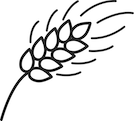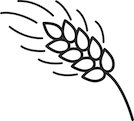Co-Occurring Disorders Among Special Populations- Substance Use Disorder Treatment for People with Co-Occurring Disorders (2 credit hours)
Program Summary: This course explores the co-occurrence of substance use disorders and mental disorders. It examines co-occurring disorders among special populations, including people experiencing homelessness, those involved with the criminal justice system, women, and people of diverse racial/ethnic backgrounds. Strategies and recommendations for treatment are given. The reading includes Chapter 6 of SAMHSA’s TIP 42 Substance Use Disorder Treatment for People with Co-Occurring Disorders.
This course is recommended for social workers, counselors, and therapists and it is appropriate for beginning and intermediate levels of practice.
Readings: Chapter 6-Tip 42 Substance Use Disorder Treatment for People with Co-Occurring Disorders
Publisher: SAMHSA
Course Objectives: To enhance professional practice, values, skills, and knowledge by examining co-occurring disorders among special populations.
Learning Objectives: Describe service models for people with CODs who are experiencing homelessness. Describe treatment frameworks for incarcerated people with CODs. Identify how treatment services can be adapted to meet the needs of women with CODs. Identify racial/ethnic disparities in the diagnosis and treatment of SMI.
Review our pre-reading study guide.
G.M. Rydberg-Cox, MSW, LSCSW is the Continuing Education Director at Free State Social Work and responsible for the development of this course. She received her Masters of Social Work in 1996 from the Jane Addams School of Social Work at the University of Illinois-Chicago and she has over 20 years of experience. She has lived and worked as a social worker in Chicago, Boston, and Kansas City. She has practiced for many years in the area of hospital/medical social work. The reading materials for this course were developed by another organization.





